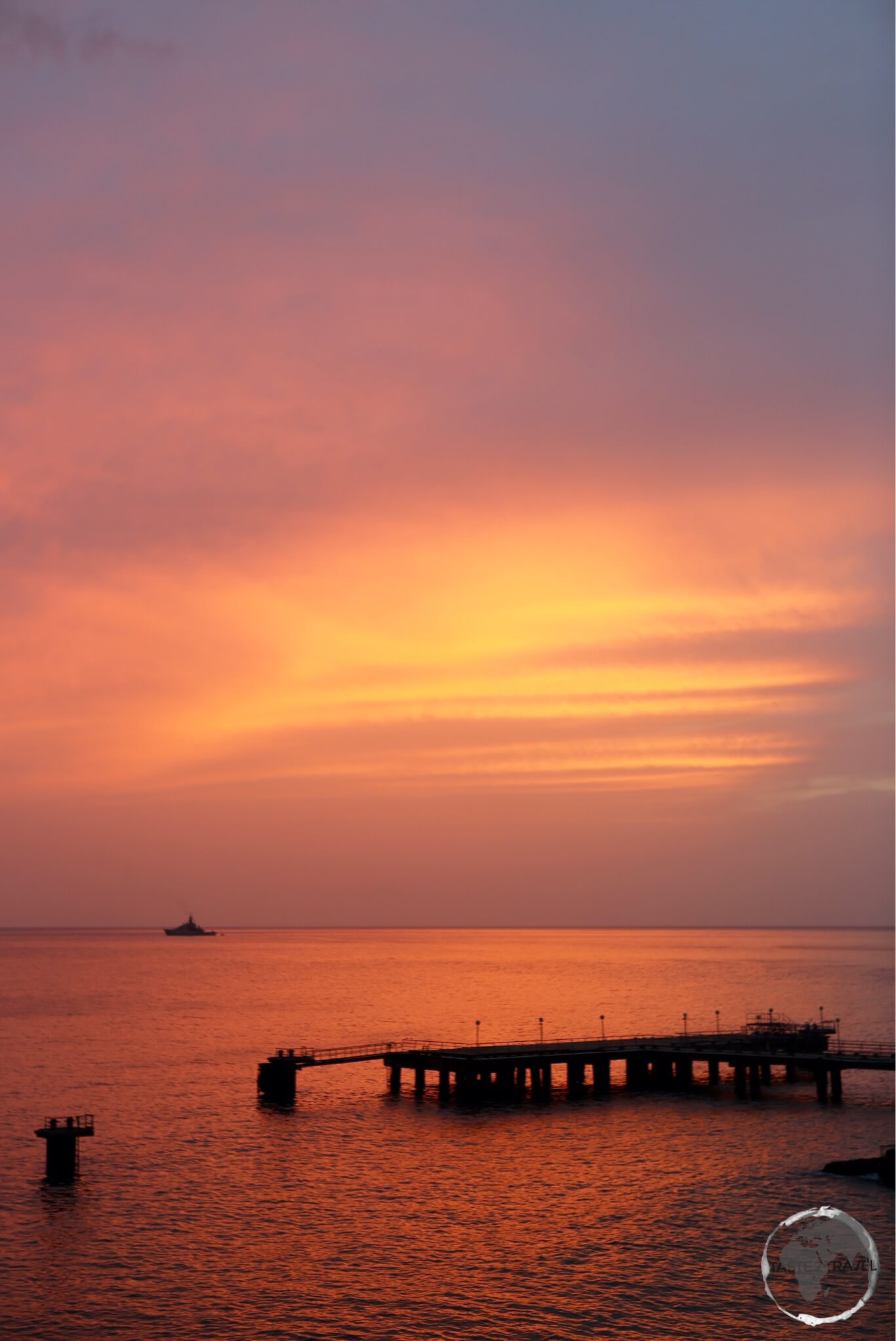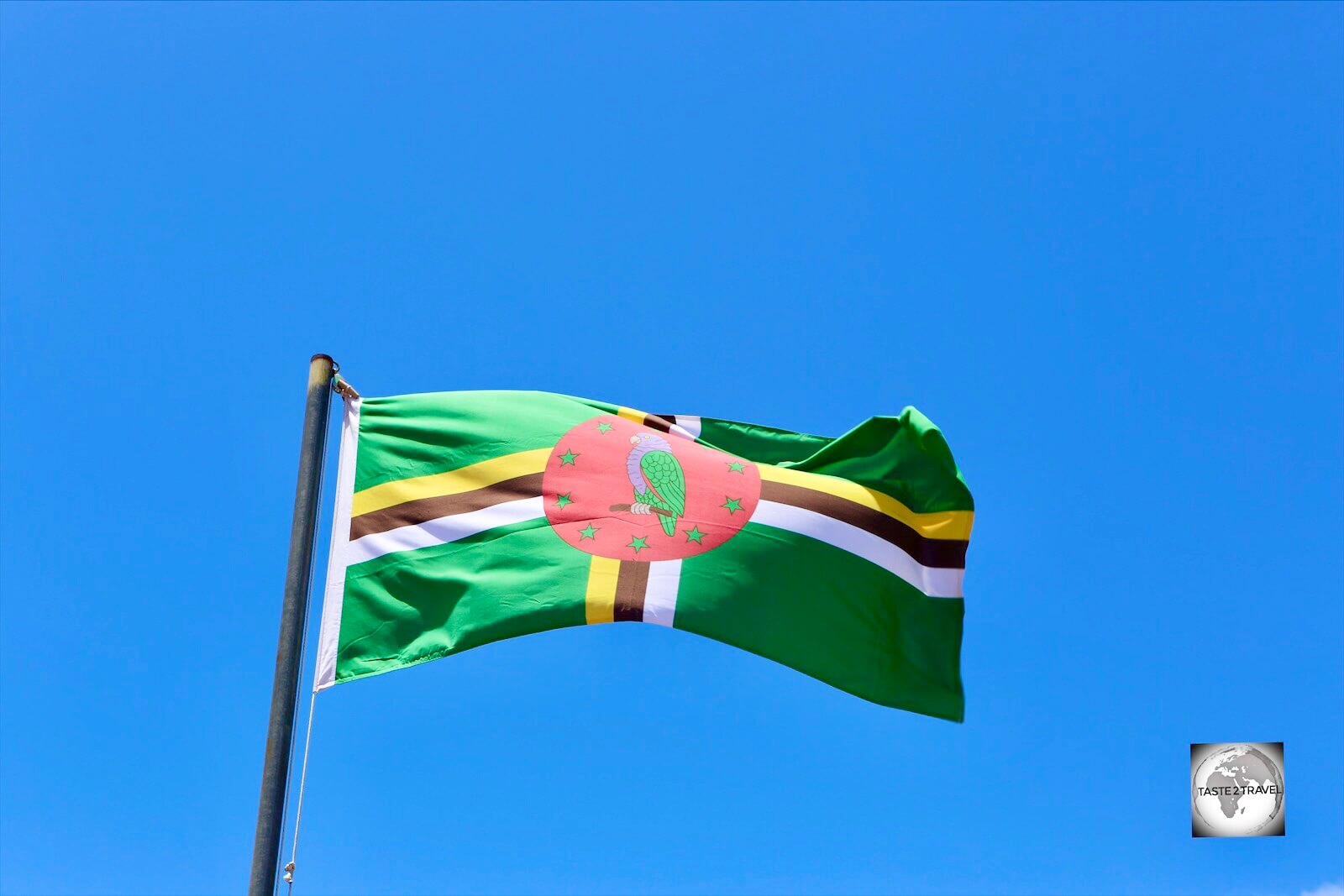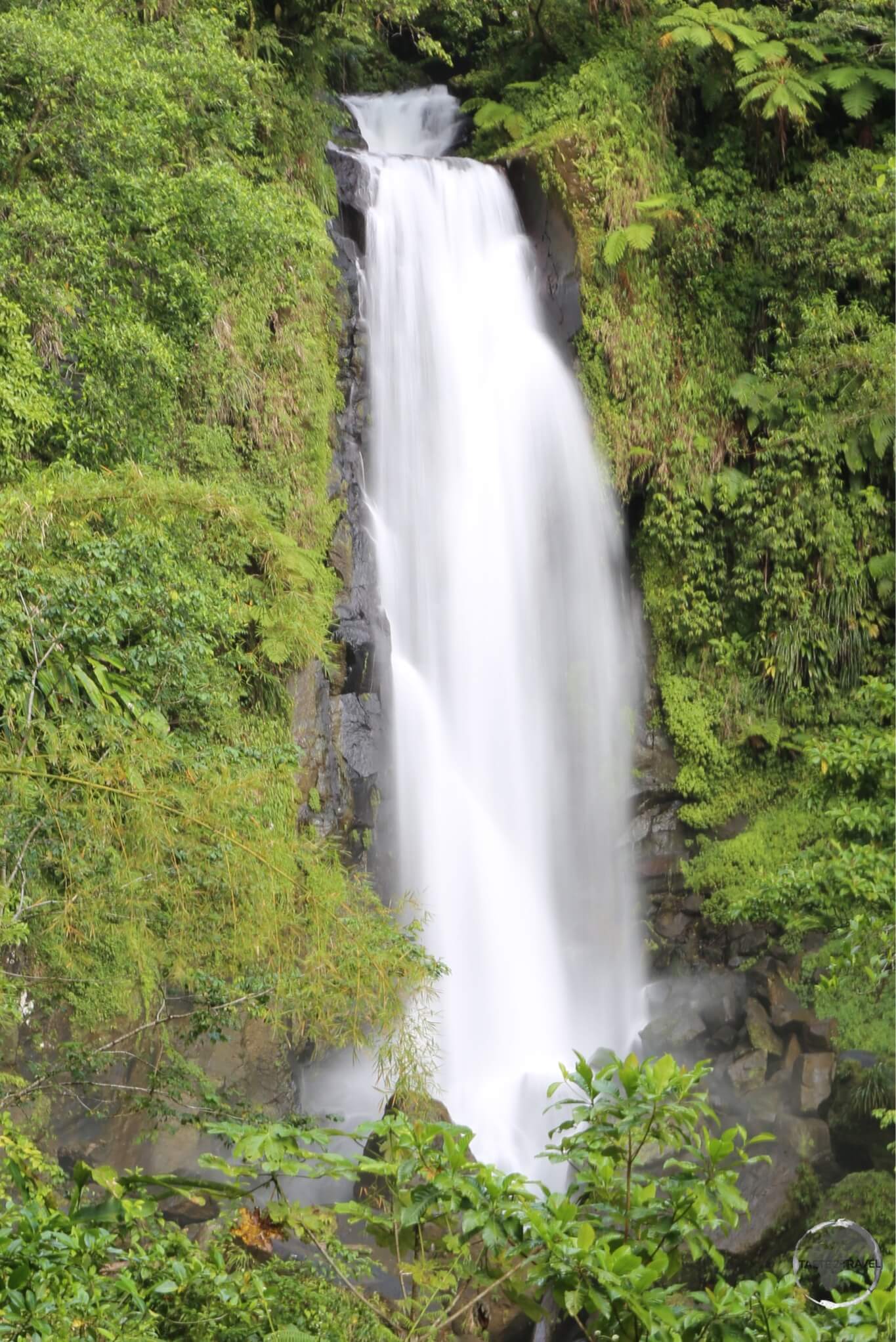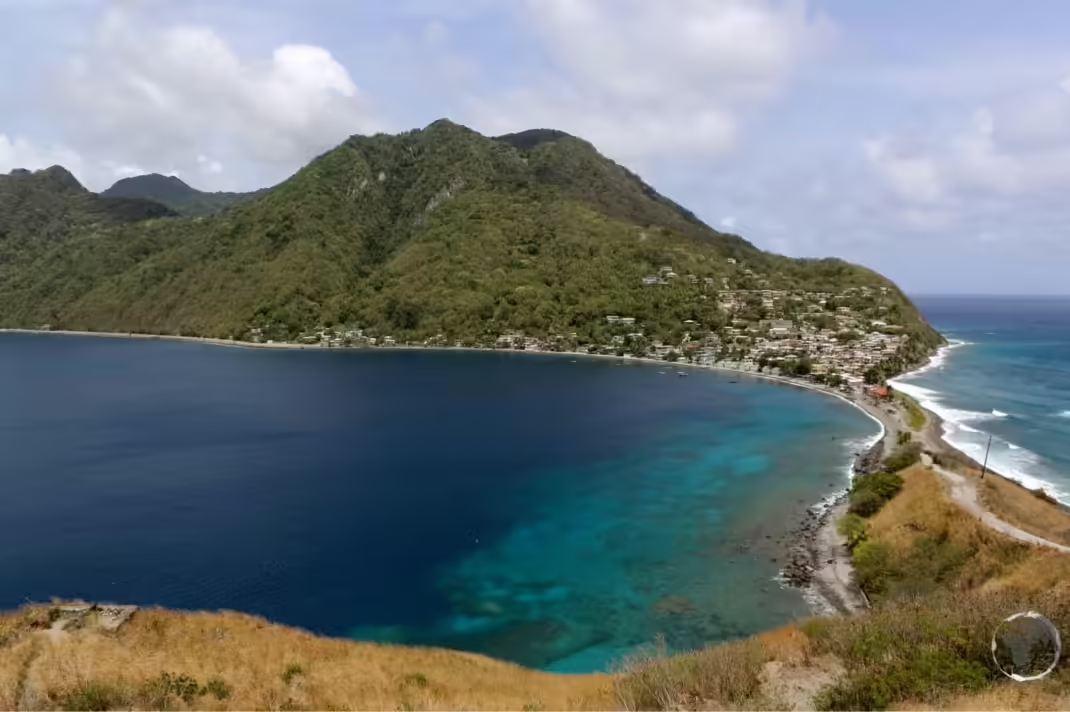Dominica Travel Guide
Welcome to the taste2travel Dominica Travel Guide!
Date Visited: April 2015
Introduction
Known as the “Nature Island,” Dominica lies at the top of the Windward Islands, south of Guadeloupe and north of Martinique. Although a short boat ride away, Dominica is a world away from its modern French neighbours. It’s far less developed, less commercialised and less modern. Everything here is on a much smaller scale and things happen at a much slower pace.

Cruising along the calm and enchanting waters of the India river, near Portsmouth, Dominica.
The island is a nature lover’s paradise. If hiking, scuba diving, snorkeling or if a natural, unspoiled landscape appeals to you, then you will enjoy Dominica. Although Dominica is in the Caribbean, it is not considered a resort island. If you are looking for all-inclusive resorts on sandy beaches this island is not for you.

A Yellow-Crowned Night Heron on the India River.
Location
The island is 47-km long and 26-km wide, with paved roads providing access to most parts of the island. The Waitukubuli National Trail is a 184-km hiking trail, which runs the length of the island. You can hike the trail in segments or spend two weeks walking the entire length.
Like neighbouring St. Lucia, Dominica is a volcanic island. Due to its volcanic landscape, the island receives a huge amount of annual rainfall (100-cm on the coast with up to 760-cm in the mountainous interior). All of this rainfall sustains lush rainforests and feeds the many rivers on the island.

Indian River reflections, Dominica.
History

Traditional Kalinago busts carved from palm stumps.
The original settlers on the island were the native Arawak Indians, who arrived from modern day Venezuela. They were eventually replaced by the Carib Indians (aka Kalinago). The Caribs called the island Waitikubuli, which means ‘tall is her body’.
On his 2nd voyage to the Americas, Christopher Columbus made landfall on the island on a Sunday, so he called the island Doménica (Sunday in Italian). However, due to the lack of gold and strong resistance from the Caribs, the Spanish didn’t settle on the island.

The abandoned Methodist Church at Hampstead, Dominica.
Eventually French settlers from neighbouring Guadeloupe and Martinique started settlements on the island. The French then formerly claimed the island in 1727. The French created plantations on the island and imported slaves from West Africa as a labour source. Most of the population today are descendants from the former slaves.

The flag of Dominica.
The British were handed possession of the island in 1763 as part of the Treaty of Paris. They maintained ownership until independence was granted in 1978.

A local boy enjoying a swim in the Soufriere Sulphur Springs.
Sightseeing

The welcome sign at Roseau Port, Dominica.
Roseau

An unusual site in the Botanical gardens – an empty school bus crushed by an African baobab tree during hurricane David in 1979.
Roseau is the capital and largest city (population: 17,000) of Dominica. The city was established by the French and was designed based on examples of towns in France, where streets extended from a central point – what is today the old market.

The Victorian-era water fountain which stands in the middle of Dawbiney market square in downtown Roseau.
The design of the city can be confusing, however the city is small and compact and most sites can be covered in one day on foot.

Hand-painted billboard in Roseau.
Sites of interest include:
- Old Market – The centre of everything in Roseau for more than 300 years. It was formerly used as a slave market, farmers market, public execution place but today is home to souvenir stalls.
- Public Market – This bustling market is a great place to buy local produce and grab a bowl of goat stew.

A typical wooden building in downtown Roseau, Dominica.
- Botanical Gardens – Set on 40 acres of land a short walk from downtown, the gardens include an aviary housing rare Jaco and Sisserou parrots.
- Dominica Museum – Located on the waterfront, this small museum provides an overview of Dominican history and culture.
- Morne Bruce – This hillside enclave is the home of the president and offers panoramic views of Roseau and the Caribbean sea. Morne Bruce can be reached via car or the 1/2 mile “Jack’s Walk” trail, located behind the parrot aviary in the Botanical Gardens.

Sunset at Roseau, the capital of Dominica.
For something different (and for the best Margaritas on the island), Zam Zam Mexican Restaurant is hard to beat. It’s located on the waterfront south of Roseau.

The flag of Dominica flying in Roseau.
Around the Island
Portsmouth

A view across to Portsmouth from Fort Shirley, Dominica.
The second largest town on Dominica. Portsmouth is located north of Roseau on the leeward (west) coast. Portsmouth is made more lively due to the presence of hundreds of American students who study at the Ross University School of Medicine.
There are several sites to visit, these include:
-
- Cabrits National Park – Located on a peninsula north of Portsmouth, this is the site of Fort Shirley, an 18th-century British garrison. There are panoramic views of Portsmouth from the fort.
-

A male purple-throated Carib hummingbird at the India river.
- Indian River – Located south of Portsmouth, the Indian River is a shady mangrove-lined waterway. The majestic, eerie-looking and impressively buttressed Bwa Mang trees stand sentinel over parts of the river banks. It’s all very serene and at times feels haunted. It was captivating enough for the producers of “Pirates of the Caribbean – Dead Man’s Chest“. Several scenes were filmed on the river and today the remaining sets can be visited. Apart from movie sets you can expect to see a variety of birds such as egrets, hummingbirds etc. Rowers can be hired from the bridge on the main road for 2 hour excursions on the river.

Bwa Mang trees on the Indian river
A good place to grab lunch in Portsmouth is from one of the snackettes on “Eat Street“, located alongside the Ross University School of Medicine Campus.
Trafalgar Falls

The majestic Trafalgar Falls.
These twins falls are located on the eastern edge of Morne Trois Pitons National Park and are worth a visit. The tallest of the falls – the Father, is a hot water fall. The lower, shorter falls – the Mother, is a cold water fall. They can be accessed via a 600-m walk along a forested trail. At the base of the falls there are swimming holes where you can alternate between hot and cold pools.

The hot (left) and cold (right) falls at Trafalgar falls, Dominica.
Wotten Waven Hot Springs
Located in the hills a short drive east of Roseau, the town of Wotten Waven is home to several sulphur springs.
I visited, and would recommend, the facilities at Ti Kwen Glo Cho hot springs. Here you’ll find a variety of different size pools, bathtubs fed by warm spring water and a short walking trail to a nearby waterfall. It’s all set in a lush rain forest setting. On your way out you can purchase a bottle of snake oil from the friendly reception staff.

Ti Kwen Glo Cho hot spring at Wotten Waven.
Emerald Pool

The Emerald pool is a relaxed natural pool with a rocky ledge and a small waterfall in the middle of a serene rainforest.
The Emerald Pool takes its name from its lush green setting at the base of a 12-m waterfall. The pool is reached via a 10 minute hike through a rain forest. The pool is deep enough for swimming, providing a great place to cool off on a hot day.

Dominican tree lizard – or ‘Zandoli’ at the Emerald Pool, Dominica.
Champagne Reef
A special attraction for snorkelers and divers is Champagne reef. The water is crystal clear, with an abundance of marine life with the added attraction of constant bubbles being provided from an underwater spring. The reef is located south of Roseau. Magic!
Scott’s Head
Located at the southern end of the island, Scott’s Head is a picturesque fishing village with a pebble beach. There are beautiful panoramic views of the Caribbean sea and the Atlantic ocean from the headland.

Fishing boats at Scott’s Head.
Carib Territory

A traditional Kalinago carving, Dominica.
Traditional Kalinago busts carved from palm stumps.Located on the East coast is the Carib territory, a reserve which was established in 1903 by the British colonial authorities. The reserve (the only one of its kind in the Caribbean) was established for the indigenous Carib people, also known as the Kalinago, who inhabited Dominica prior to European colonisation and settlement. Currently there are about 3,000 Kalinago living in the reserve, residents share ownership of all the land within the reserve.
There are 8 hamlets in the reserve and a model village (Kalinago Barana Auté), which has been created to provide tourists with an insight into the Kalinago culture. Enthusiastic guides are available for guided visits.
Even if you miss the ‘welcome’ signs you will know when you have entered the territory from the abundance of native craft shops lining the main road.
Calibishe

Cow grazing in an abandoned sugar mill in Hampstead.
Located on the north-east coast is this beach side town, which provides a good base for exploring this part of the island. There are lots of accommodation options and restaurants.

A panoramic view of the east coast of Dominica, north of Calibishe.
I stayed up on the hill at the Jacoway Inn , which is owned by an enthusiastic Canadian lady (Carol Ann) and her Dominican husband. They offer two studio apartments and a one-bedroom bungalow. The breakfast is especially good with many homemade items on offer.
Accommodation
There are no big name international hotel chains on Dominica. The best hotel in Roseau, and one I would recommend, is the Fort Young Hotel. It was originally built in 1699 by the British as a fort. Located downtown, directly on the waterfront, this is a local institution full of charm. Good rates are available on booking.com
Elsewhere on the island, there are loads of accommodation options, mainly privately owned guest houses and B&B’s.
Eating Out

A speciality on Dominica are the homemade spiced rums, some of which are very political!
The Creole and British influenced cuisine of Dominica is very different to the cuisine found on the neighbouring French islands of Martinique or Guadeloupe.
A moist tropical climate and rich volcanic soil ensure abundant agriculture on the island. Dominica is the vegetable garden of the Antilles, exporting it’s produce to neighbouring islands. Markets on the island are a treat to visit, offering an abundance of interesting fruits and vegetables, all of which can be found on local menus.
Fishing is still an important industry so seafood is plentiful.
Visa Requirements
Visitors do not require visas to enter Dominica, unless they are nationals of Haiti or Dominican Republic.
Getting There

Boats in Roseau port, Dominica.
By Air
There are two airports on Dominica – the main airport, Douglas-Charles (formerly Melville Hall), located 3-km north of the town of Marigot on the east coast and the smaller Canefield airport, located 5-km north of Roseau.
Canefield Airport – this airport currently has no scheduled services.
Douglas-Charles Airport – since services to Canefield airport ceased, this is the only airport in operation on the island.
Services include:
- Air Antilles Express – services to Martinique, Guadeloupe
- Air Sunshine – services to Sint Maarten, Puerto Rico, Anguilla, Nevis, Tortola, Virgin Gorda
- BVI Airways – services to Sint Maarten
- LIAT – services to Antigua, Barbados, Guadeloupe, Saint Lucia, Puerto Rico, Sint Maarten
- Seaborne Airlines – services to Puerto Rico
- Winair – Services to Guadeloupe, Sint Maarten
By Sea

A cruise ship docked at Roseau.
There is a scheduled ferry service connecting Dominica with Martinique, St. Lucia and Guadeloupe. Ferries depart from the port in Roseau. The service is operated by the Guadeloupe based Express-des-Iles. Check their website for schedules and fares.
Cruise ships dock in Roseau, directly in front of the Fort Young hotel.
Getting Around

A 4WD rental car is the best choice for Dominica’s rough roads.
It is easy to get around Dominica. Taxi services are readily available, as are small buses or vans that travel the highways, picking up and dropping off passengers on request.
The best option for exploring the island is to hire a car. I used, and would recommend, Courtesy Car Rentals, who have an office in Roseau and at the airport.
Like other Anglo-Caribbean islands, the government of Dominica raises revenue from tourists by requiring all drivers to purchase a local driver’s license. This can be done through the rental agency.
The main roads on the island are paved but are often steep, thin, and twisted. The Chinese-built highway running north along the coast from Roseau to Portsmouth is in excellent condition. Likewise, the EU-built road, which traverses the island from Roseau to Marigot is also in excellent condition. On all other roads caution needs to be exercised as there are many potholes, steep embankments without protective sidings and tight, unmarked bends.
Safe Travels!
Darren
Follow me on Instagram:
[instagram-feed feed=1]
Further Reading
Other travel reports from the Caribbean region include:
- Anguilla
- Antigua & Barbuda
- Aruba
- Bahamas
- Barbados
- Bonaire
- Bermuda
- Cayman Islands
- Cuba
- Curaçao
- Dominica
- Dominican Republic
- Grenada
- Guadeloupe
- Haiti
- Jamaica
- Martinique
- Montserrat
- Puerto Rico
- Saba
- Saint Barthélemy (Saint Barts)
- Saint Eustatius (Statia)
- Saint Kitts & Nevis
- Saint Lucia
- Saint Martin/ Sint Maarten
- Saint Vincent & The Grenadines
- Trinidad & Tobago
- Turks & Caicos
- Virgin Islands (British)
- Virgin Islands (U.S.)
Dominica Travel Guide Dominica Travel Guide Dominica Travel Guide Dominica Travel Guide Dominica Travel Guide Dominica Travel Guide Dominica Travel Guide
Author: Darren McLean
Darren McLean is an Australian, full-time, digital nomad who has spent 37 years on a slow meander around the globe, visiting all seven continents, 192/ 193 UN countries and 245/ 251 UN+ countries and territories.
He founded taste2travel to pique one’s curiosity and inspire wanderlust.







